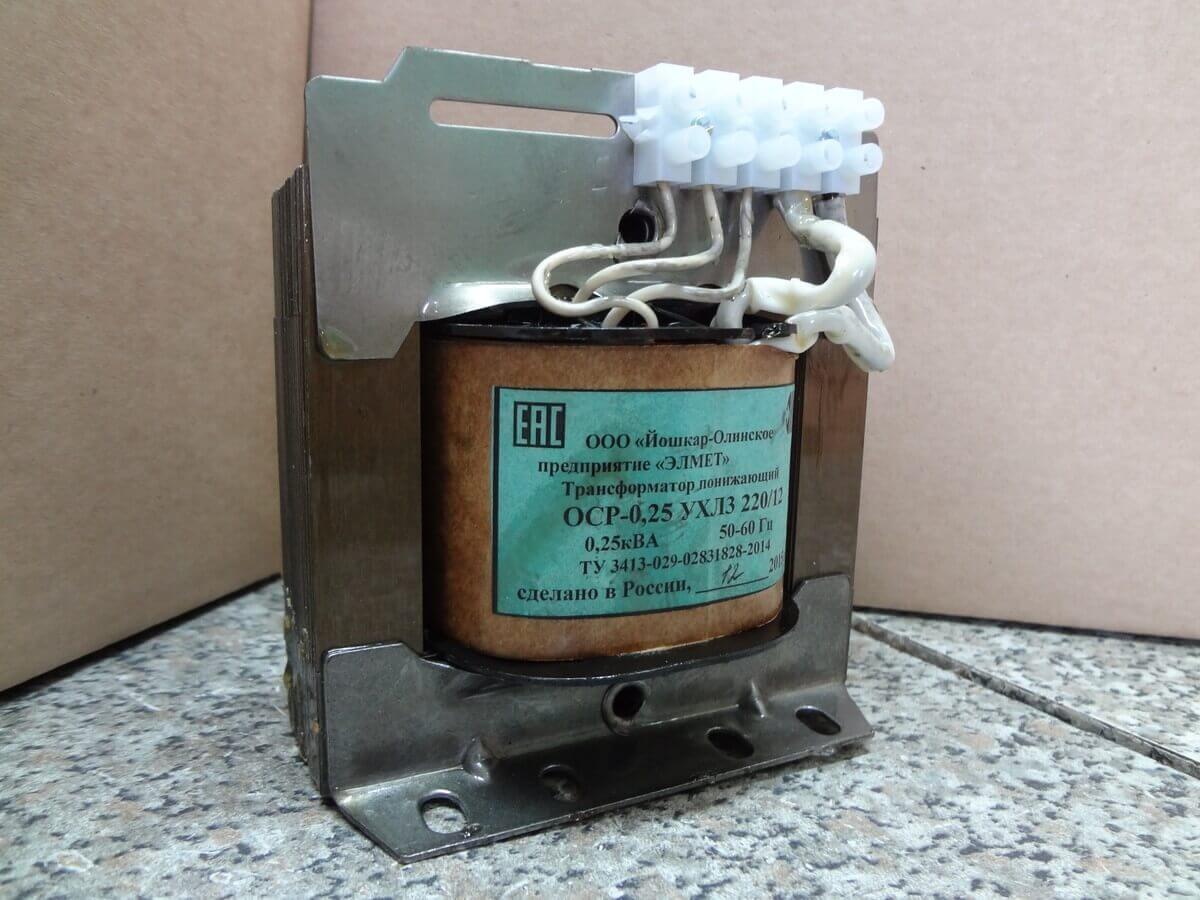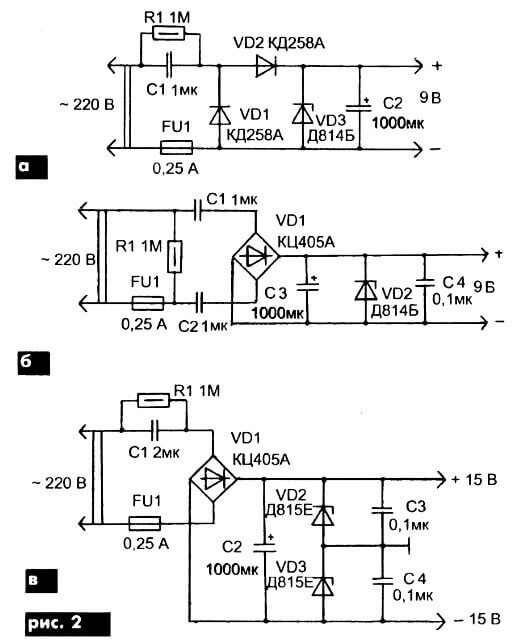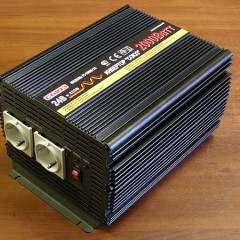How to lower constant and alternating voltage - an overview of ways
Lower AC voltage
Consider typical situations when you need to lower the voltage to connect a device that works on AC, but its supply voltage does not correspond to the usual 220 Volts. It can be, as various household appliances, tools, and the above-mentioned lamps.
Connecting home appliances from the USA at 110 V to a 220 V network
Perhaps the most common situation arises when a person buys a device from foreign online stores, and upon receipt determines that it is designed for power from 110 volts. The first option is to rewind the transformer powering device, but most of the devices are powered by a switching power supply, and for connecting a power tool, it is better to do without rewinding. To do this, use a step-down transformer. In addition, you can reduce the voltage in the network using an autotransformer or a conventional transformer with taps from the primary winding to 110-127V - these are often found in Soviet TVs and other electrical appliances.
However, when using such a turn-on of the transformer, if it occurs, a break in a part of the winding after the removal of 110 Volts (see the figure below), all 220V will fit the device and it will fail.
If we talk about finished devices, we can pay attention to the STIL autotransformers.
Important! When buying transformers or autotransformers, consider the rated current of its windings and the power that it can withstand.
A more reliable solution to the problem is to lower the voltage from 220 to 110V or from 220 to 127V using a transformer. There are many companies on the market that sell such products, mainly toroidal transformers. They come in metal boxes or smaller cases with a built-in socket, as well as adapters in plastic cases.
To summarize, listing the basic requirements for a transformer for powering 110V devices:
- The output of the transformer should be 110V, and at the input - 220V.
- The power of the transformer must be greater than the power of the connected device by at least 20%.
- It is advisable to protect the primary and secondary circuit with a fuse.
- Access to the high voltage terminals must be limited and all connections insulated.
Lower voltage to power low-voltage fixtures
At the beginning of the article, we mentioned that a portable lamp should be powered by low voltage. In everyday life, this issue will be especially relevant for car enthusiasts when repairing a car in a garage. The same fixtures are used as a local source of light on machines (drilling, turning, grinding and others).
In order to lower the voltage from 220 to 36V, you can use brand transformers:
- OCO 0.25 220 / 36V;
- OSM 0.063kW 220/36;
- OSZR 0.063 kW 220 / 36V;
- Box with a step-down transformer YATP-0.25 220 36V (this is a turnkey solution in a metal case for installation in rooms, protection class IP54).
To lower the voltage from 220 to 12V, you can use brand transformers:
- OSO25 220 / 12V;
- TRS 300W AC 220 B-AC 12B (toroidal does not take up much space);
- 30VA, 230 / 12V, 2.5A INDEL TSZS30 / 005M (low power for mounting on a DIN rail).
Lowering the voltage in the house
Along with irregular power Often there is a problem with over and under voltage. This leads to premature failure of heating devices, lamps and other devices at the consumer. Suppose you need to lower the voltage from 260 to 220V, so your choice is to use a voltage stabilizer. They come in different types, the cheapest of them is a relay, in fact it is an autotransformer in which the relays automatically switch the taps from the winding.
If you need to protect a specific device, for example, a computer, use low-power models with a capacity of about 1000 VA (1 kVA), such as SVEN VR-L1000, its cost is 17-20 dollars. But keep in mind that their active output power is less than the indicated full in Volt-Amps. For example, a 1 kVA model can supply loads of up to 0.3-0.4 kW. Also look at the specifications. The specified model can withstand up to 285 Volts, but most models abut 260 V.
In most cases, to protect the whole house, the RUCELF SRWII-12000-L model has enough of its full power of 12,000 VA, and the load capacity for active power is 10,000 watts. It can withstand input voltages up to 270V.
To learn more about how to choose a voltage stabilizer and what kind of stabilizers are, we told in the articles:
- https://our.electricianexp.com/en/kakie-byvayut-stabilizatory-napryazheniya.html
- https://our.electricianexp.com/en/sovety-po-vyboru-stabilizatora-napryazheniya.html
- https://our.electricianexp.com/en/rejting-stabilizatorov-napryazheniya-dlya-doma.html
- https://our.electricianexp.com/en/kak-zashhitit-domashnyuyu-elektroprovodku-stabilizatorom-napryazheniya.html
Ballast capacitor for powering low-power devices
To power low-power devices, you can do without a transformer - with one capacitor. This circuit is called a ballast capacitor transformerless power supply. The principle of its operation is based on limiting the current using the reactance of the capacitance. Below you see options for its implementation.
The calculation of the capacity of the ballast capacitor for transformerless power is based on the current consumption of the load and its supply voltage.
Or according to this formula, they give the result approximately the same:
By the way, the expression under the root as a result when calculating the capacitors for powering devices from 5-20V gives about 220, or a value equal to Uinput.
Such a power source is suitable for connecting receivers, LEDs, night lights, charging small batteries and other low-power consumers.
Lower the constant voltage
When designing electronics, it is often necessary to lower the voltage of an existing power supply. We will also look at a few typical situations.
If you work with microcontrollers, you might notice that some of them work from 3 Volts. Finding the right power supplies is not easy, so you can use a charger for your phone. Then you need to lower its output from 5 to 3 Volts (3.3V). This can be done by lowering the output voltage of the power supply by replacing the zener diode in the feedback circuit. You can achieve any voltage, both high and low - by setting a zener diode of the desired rating. You can determine it by the selection method, in the diagram below it is highlighted in red ellipse.
And on the board it looks like this:
In the next video, the author demonstrates such a rework, not only to lower it, but to increase the output parameters.
On chargers of a more advanced design, the adjustable zener diode TL431 is used, then adjustment is possible by replacing the resistor or by the ratio of the pair of resistors, depending on the circuitry. In the diagram below they are marked in red.
In addition to replacing the zener diode on the memory board, you can lower the voltage with a resistor and a zener diode - this is called a parametric stabilizer.
Another option is to install a chain of diodes in the circuit break. On each silicon diode, about 0.6-0.7 volts will drop. So you can lower the voltage to the desired level by typing the desired number of diodes.
Often there is a need to connect the device to the on-board network of the car, it ranges from 12 to 14.3-14.7 volts. To lower the DC voltage from 12 to 9 Volts, you can use a linear stabilizer such as L7809, and to lower from 12 to 5 Volts, use L7805. Or their analogues ams1117-5.0 or ams1117-9.0 or amsr-7805-nz and the like for any desired voltage. The connection diagram of such stabilizers is shown below.
To power more powerful consumers, it is convenient to use pulse converters to lower and adjust the voltage from the power source. Boards on LM2596 are an example of such devices, and in English-language online stores they can be found at the request of “DC-DC step down” or “DC-DC buck converter”.
Finally, we recommend that you watch a video on which ways to lower the voltage are clearly considered:
That's all the most rational options to lower the voltage of direct and alternating current. We hope the information provided was useful and interesting for you!
Surely you do not know:























